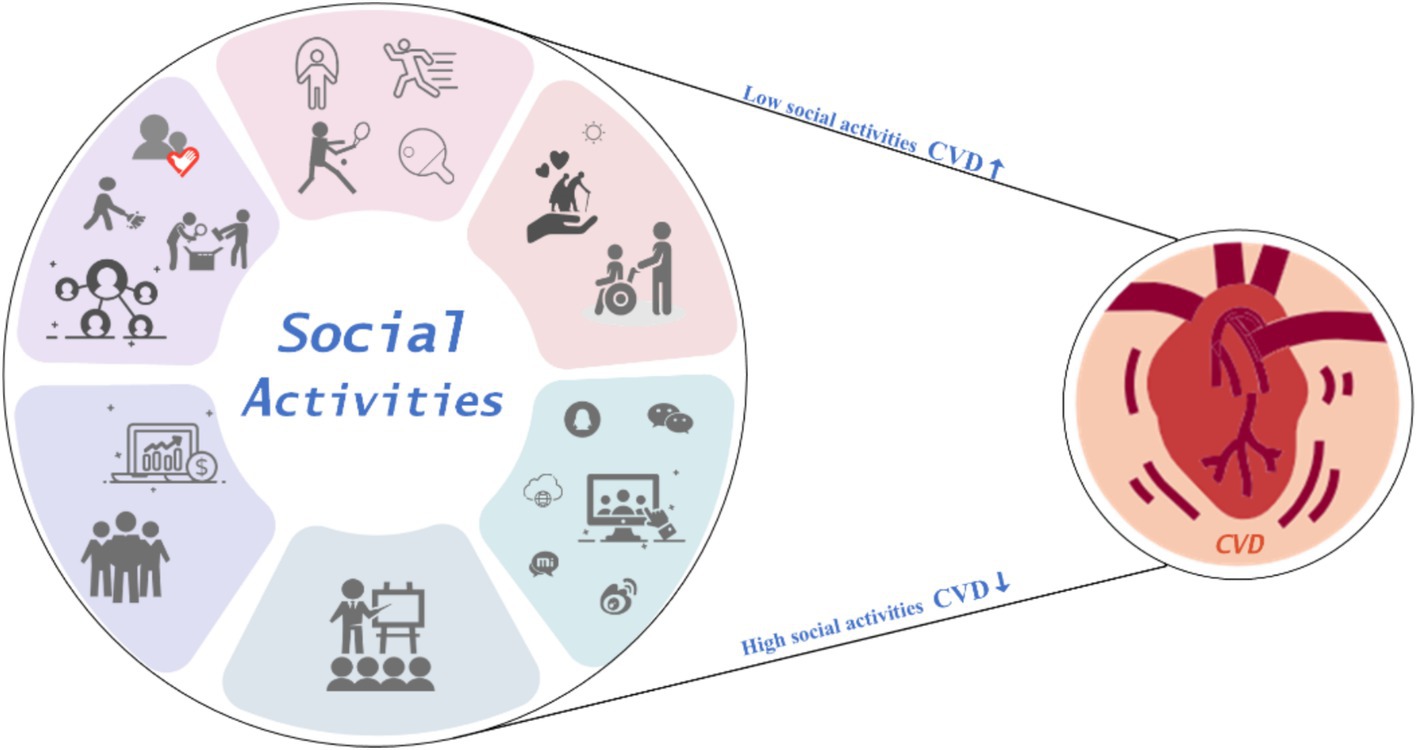
The impact of social activity on cardiovascular disease risk among middle-aged and older adults in China: a nationwide cohort study based on the CHARLS database
Objective: This study aims to examine the relationship between social activity and the risk of cardiovascular disease (CVD) in middle-aged and older adults in China.
Methods: We used data from the China Health and Retirement Longitudinal Study (CHARLS) collected between 2011 and 2020. The study followed 4,099 participants aged 45 and older, all free from cardiovascular disease at baseline (2011), over a 9-year period. CVD status was self-reported by participants. Kaplan–Meier survival curves were employed to illustrate the cumulative incidence of cardiovascular events across different levels of social activity. Cox proportional hazards regression models and restricted cubic spline (RCS) were used to evaluate the association between social activity and CVD risk. Subgroup analyses were conducted to explore potential interactions between social activity and CVD risk, stratified by age, gender, education level, smoking and drinking status, number of chronic conditions, depression, and body mass index (BMI).
Results: A total of 4,099 participants were included in the analysis. Over the 9-year follow-up period, 813 cardiovascular events occurred. After adjusting for age, gender, residence, education, marital status, smoking and drinking habits, chronic disease burden, depression, and BMI, each 0.1 decrease in social activity level was associated with a 7.4% increased risk of cardiovascular events (aHR, 1.074; 95% CI: 1.069–1.079).
Conclusion: Social activity is significantly linked to the risk of cardiovascular disease among middle-aged and older adults in China. These findings emphasize the importance of maintaining social engagement to support cardiovascular health in this population.
Graphical abstract
Graphical Abstract.
1 Introduction
Cardiovascular disease (CVD) continues to be a leading cause of death worldwide, representing a significant public health challenge (1, 2). In China, the prevalence of CVD is strikingly high, with an estimated 330 million people affected by the condition. This includes approximately 13 million individuals suffering from stroke and 11.39 million with coronary heart disease. The burden of CVD is expected to rise further, driven by an aging population and changing lifestyle factors (3). Although CVD incidence is also increasing among younger populations, middle-aged and older adults remain the primary target for prevention, management, and treatment due to their increased susceptibility.
Over the past few decades, considerable attention has been paid to identifying modifiable risk factors for CVD, particularly those that can be influenced through lifestyle changes. Studies conducted both in China and internationally have explored a range of factors associated with primary prevention in middle-aged and older adults, including diet, physical activity, and social participation (4–7). Among these, social activity has emerged as a key factor in promoting heart health and preventing CVD. This is because social activity is not only widely applicable but also a cost-effective way to enhance overall well-being in older adults. Social activity refers to the different ways in which individuals engage and communicate with others in their daily lives, whether through family, friends, or community interactions. Specifically, the level of social activity reflects the degree of participation in these social interactions, serving as an indicator of social connectivity and integration within society (8, 9).
Scholars generally agree that social activity plays a crucial role in social participation, contributing significantly to the physical, men
Order NowAchieve academic excellence with our professional dissertation writing services, offering personalized support and expert guidance to help you create a standout thesis with confidence.
